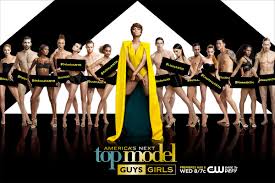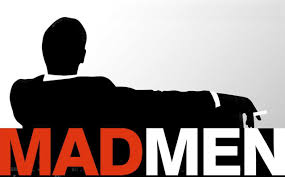To The Bone
Released 14/07/2017
Written and Directed by Marti Noxon
Starring Lily Collins and Keanu Reeves

Netflix’s latest deep dive into controversial young-adult content is To The Bone, a film that rubbed people up the wrong way weeks before it was even released. To The Bone follows Ellen, a twenty-year-old, middle class, cis-gendered, straight, Caucasian woman (aka. your stock photo placeholder for “person with an eating disorder”) who after four unsuccessful attempts at going inpatient to treat her anorexia, is accepted into an unconventional treatment program run by Doctor William Beckham.
This film kicked up a fair bit of controversy prior to it’s release, and with good reason. Concerns were mostly directed at the potential for the film to be a trigger for those suffering from an eating disorder, or those at risk of developing one. If this film turned out to be too realistic, would it be interpreted as a ‘how to’ guide? If it wasn’t realistic enough, would it serve to cast even more stigma and isolation and misunderstanding over an aspect of mental health that is already often wildly misunderstood?
But anyway, lets start on the positives. The film is beautifully shot. The performances range from strong to pretty okay. Lily Collins as Ellen has a great screen presence and is fascinating to watch in what I imagine would have been a very difficult role to portray.
And now, the not-so-positives.
The film is definitely problematic, although it’s problematic in ways that I didn’t expect. The film’s main selling point was that it was a realistic portrayal of what it’s like to live with an eating disorder. Now, I can’t say whether or not this true, having been lucky enough to not be afflicted with an eating disorder myself. However, I feel like it’s a fair call to say that for sufferers of eating disorders in the real world, it’s not a case of getting into a program overnight. It’s not a case of said treatment happening in an enormously glamorous house that is comparable to a family home, or upmarket college house. It’s not a case that one can run away and return the prodigal child whose learned their lesson. (A much better review from someone who has suffered and survived an eating disorder that touches upon a similar point can be read here).
If it is, then this is the domain of the privileged, the few that can afford to have a mental illness. This is not the case for everybody. I would argue it’s not the case for the majority. If realism was the goal, then this is realism for the few, not the many, and falls into a Hollywood trap that pleads reality from a decorated stage. The problem with this is that it misrepresents the reality that, in the real world, treatment for mental health is drastically underfunded, expensive, and difficult to access. And, to cap off this little rant, it plays into the harmful idea that a positive outlook or catalytic moment is all one needs to overcome their troubles. This simply isn’t true, it isn’t helpful, and again, it’s taking the film further away from the reality that mental illness is complicated and there are no simple ‘one-size-fits-all’ answers.
My second bone to pick (too soon?) was with the men in this film. There are three main men here in a film that, like the disorder it’s concerned with, is mostly (though not exclusively) dominated by women. This is even hilariously joked about during a session of therapy when the family patriarch is once again absent. Ellen’s father appears in the film by name only, and yet his presence dominates the family dynamic between her stepmother and sister, and Ellen’s lesbian mother. The absence of the character we never meet is palpable. It cuts deep for these characters, in a way that is emphasised and troubling.
The second male of note is the straight talking Doctor Beckham himself, another paternalistic figure whose notoriety speaks more than his presence does. “He’s the best!” they say. “He’s barely in the film!” I respond. And yet, when he is there, the doctor dominates over the oh-so-skinny women in his care as the fatherly yet weirdly sexualised figure that condescends to tuck a twenty-year-old woman into bed and call her ‘kiddo’. But I digress.
The third man in the mix is the one to show that, hey, we know men can have eating disorders too! The pay off is buying into another cliché- old mate is a dancer. Go figure. Luke is a curious gender flipped spin on the manic-pixie-dream girl trope. Relentlessly optimistic, quirky, and British, this character annoys me in a number of ways. Like the good doctor himself, he dominates the mostly female household with a strangely paternalistic air that made me squirm. He’s everywhere at all times, offering wisdom, chocolate, hugs, persisting even when given a clear and firm ‘no’. He’s a nice guy. He takes on a strange infatuation with Ellen, naturally, which in this viewer’s opinion, rapidly turns creepy.
What the men in this film have in common is the way the manage to dominate the directions of these characters and their lives. They somehow fill every space, either through their absence or relentless stream of chatter. The otherwise all female cast are overshadowed by the power that for some reason is constantly handed, in buckets, to men. What’s perhaps most troubling is that, in a film about bodies, control of these bodies is handed to men, time and time again, be it Doctor Beckham’s distant intentions to mould these women into the shapes that he wants, or young Luke’s physical advances being justified by the creepy as fuck line of “you need to be touched by someone who cares about you.”
Even Ellen’s absent father relates to the woman in this film almost exclusively in terms of body as collateral. Step-mother and divorced wife fight about him with sex as the trump card- he didn’t touch you. He wants to touch me. His physical absence takes on new significance in this light, as though the crumbling worlds of these women and starving of the flesh is directly related to the lack of a male presence.
And most interestingly, I would argue the audience is placed squarely in the perspective of the male gaze, as far from being invited to empathise with these women, instead their bodies are used as an object of curiosity, devoured by the camera that lingers on hollow stomachs and protruding ribs with less a manner of compassion than that of cold voyeurism. It’s perverse. It’s unsettling. And yet, one cannot look away.
There are a number of other criticisms I could lay on this film (like the ending. My good lord. The fucking ending.) but I won’t. Someone else can do that.
This film was one with great potential that, despite everything, I did enjoy, but that missed the mark in ways that felt too significant to be ignored. There is some good to be gleaned here- the overall message is a positive one and the film does handle difficult subject matter with self-awareness and a degree of tact. But in terms of it’s accessibility as a ‘realistic’ film, and the small rant I just had about the men in this film, there are potholes, definitely. And it’s unfortunate because these exact hole are the kinds of tripping points a film like this just can’t afford to have.








